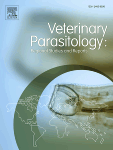Ver ítem
- xmlui.general.dspace_homeCentros Regionales y EEAsCentro Regional Buenos Aires SurEEA BalcarceArtículos científicosxmlui.ArtifactBrowser.ItemViewer.trail
- Inicio
- Centros Regionales y EEAs
- Centro Regional Buenos Aires Sur
- EEA Balcarce
- Artículos científicos
- Ver ítem
Frequency of Neospora caninum-specific antibodies in bulk milk from dairy farms from Mar y Sierras Dairy Basin, Argentina
Resumen
The aim of this study was to describe the prevalence of Neospora caninum based on the detection of specific antibodies in bulk tank milk (BTM) from dairy cattle farms in the Mar y Sierras Basin by using an enzyme-linked immunosorbent assay (ELISA). A total of 98 BTM samples from 49 dairy farms were collected during autumn and spring of 2019. Additionally, 147 paired individual milk and serum samples were collected from two dairy farms to assess the
[ver mas...]
The aim of this study was to describe the prevalence of Neospora caninum based on the detection of specific antibodies in bulk tank milk (BTM) from dairy cattle farms in the Mar y Sierras Basin by using an enzyme-linked immunosorbent assay (ELISA). A total of 98 BTM samples from 49 dairy farms were collected during autumn and spring of 2019. Additionally, 147 paired individual milk and serum samples were collected from two dairy farms to assess the prevalence within-herd by ELISA and indirect fluorescent antibody test (IFAT, serum samples). Additionally, 12 individual serum samples were also assessed to test the agreement between IFAT and ELISA (total serum samples 159). Noteworthy, 100 and 91.84% of 49 dairy farms were positive in the BTM in autumn and spring, respectively. For the within-herd individual samples, a good agreement between serum and milk results was obtained for ELISA and IFAT (0.86–0.90). This is the first study in Argentina in which milk samples were tested to determine the N. caninum infection status at herd and within-herd levels in dairy farms, providing a base for further research.
[Cerrar]

Fuente
Veterinary Parasitology: Regional Studies and Reports 26 : 100646 (December 2021)
Fecha
2021-12
Editorial
Elsevier
ISSN
2405-9390
Documentos Relacionados
Formato
pdf
Tipo de documento
artículo
Proyectos
(ver más)
INTA/2019-PD-E5-I103-001/2019-PD-E5-I103-001/AR./Desarrollo de tecnologías diagnósticas y estudios epidemiológicos para el control de enfermedades que afectan la producción animal y la salud pública
Palabras Claves
Derechos de acceso
Restringido
 Excepto donde se diga explicitamente, este item se publica bajo la siguiente descripción: Creative Commons Attribution-NonCommercial-ShareAlike 2.5 Unported (CC BY-NC-SA 2.5)
Excepto donde se diga explicitamente, este item se publica bajo la siguiente descripción: Creative Commons Attribution-NonCommercial-ShareAlike 2.5 Unported (CC BY-NC-SA 2.5)

